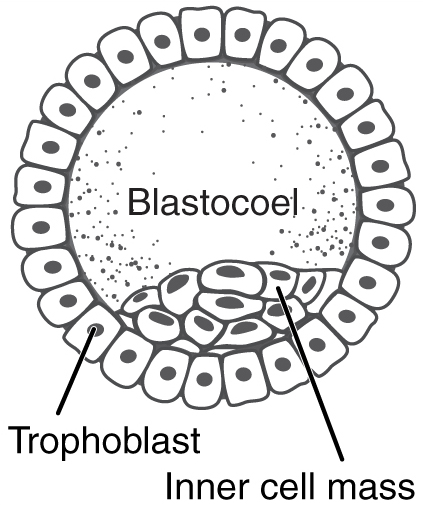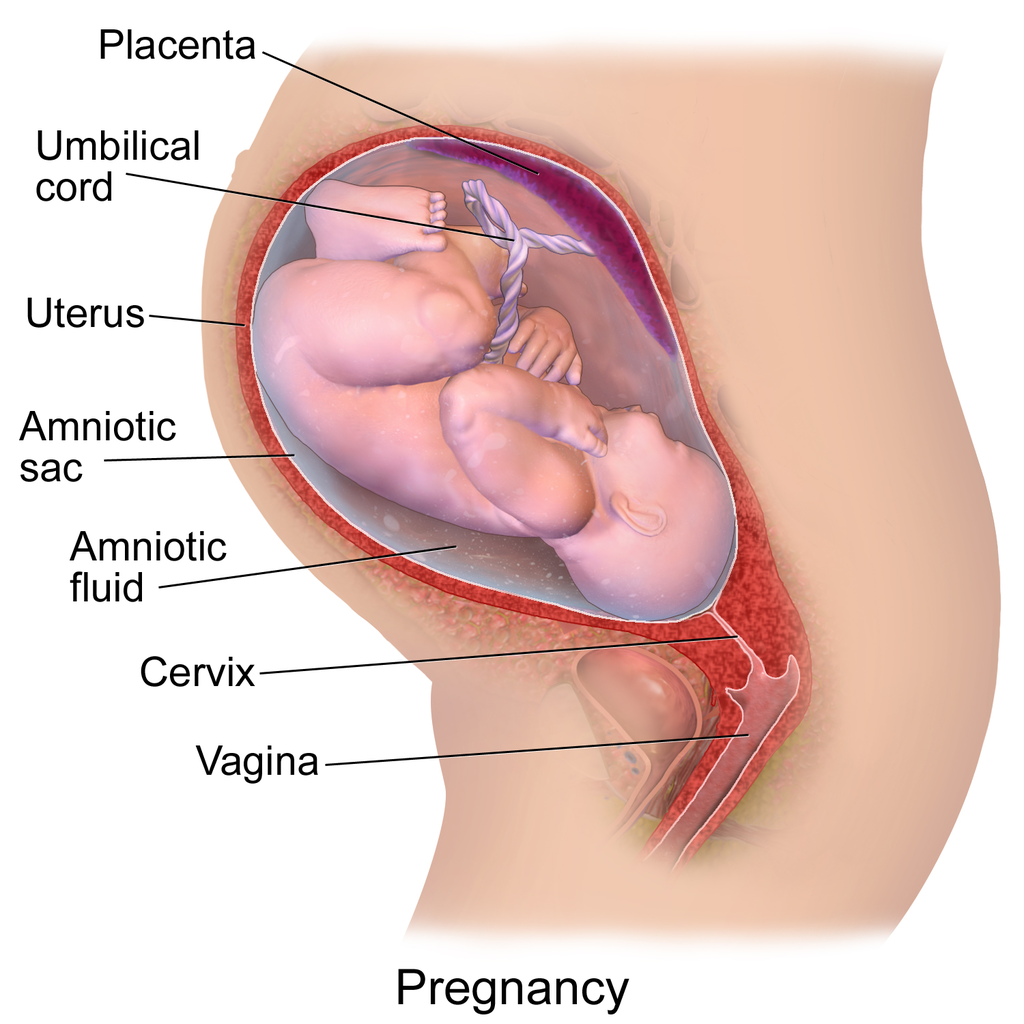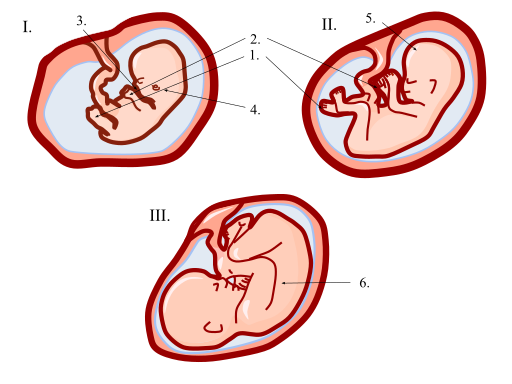Chapter Five: Prenatal Development and Birth
The Germinal Period
Now that we understand the process of conception, let’s explore what happens once the egg is fertilized and the zygote is created.
The Germinal Period is the first two weeks after conception. The zygote is created and cells continue to divide. At approximately 10 days after conception, the zygote attaches to the uterine wall. This is called implantation. Even at this early date, the differentiation of cells has begun.

The blastocyst (blastocoel) is an inner layer of cells that later develops into the embryo. The trophoblast is the outer layer of cells that provides nutrition and support for the embryo.
The embryonic period occurs two to eight weeks after conception. Organogenesis, or organ formation, begins and the support systems for cells form.
The embryo has three layers of cells. The endoderm is the inner layer of cells which becomes the digestive and respiratory systems. The ectoderm is the outer layer of cells which forms the nervous system, sensory receptors and skin. The mesoderm is the middle layer of cells which forms the circulatory, excretory and reproductive systems as well as bones and muscles.
The embryo has a complex life support system. The placenta provides nutrition for the embryo. The umbilical cord connects the baby to the placenta. The amnion, or amniotic sac, is an envelope in which the baby floats. It is temperature controlled, humidity controlled and virtually shock proof (Santrock, 2013).

The fetal period occurs two months after conception and lasts for approximately seven months until the baby is born. The largest prenatal weight gains occur during this period. Fingers, toes, skin, lungs and reflexes all develop as the baby prepares for birth. The three trimesters are different from the three prenatal periods. In fact, the embryonic period, the germinal period and the beginning of the fetal period all occur during the first trimester!

Media Attributions
- The Germinal Period © OpenStax College via. Wikimedia Commons is licensed under a CC BY-SA (Attribution ShareAlike) license
- Pregnancy side diagram © Bruce Blaus via. Wikimedia Commons is licensed under a CC BY-SA (Attribution ShareAlike) license
- Three Trimesters of Fetal Development © Mhuerth01 via. Wikimedia Commons is licensed under a CC BY-SA (Attribution ShareAlike) license
the first cell of human life
the inner layer of cells that later develops into the embryo
the outer layer of cells that provides nutrition and support for the embryo
organ formation
connects the baby to the placenta

